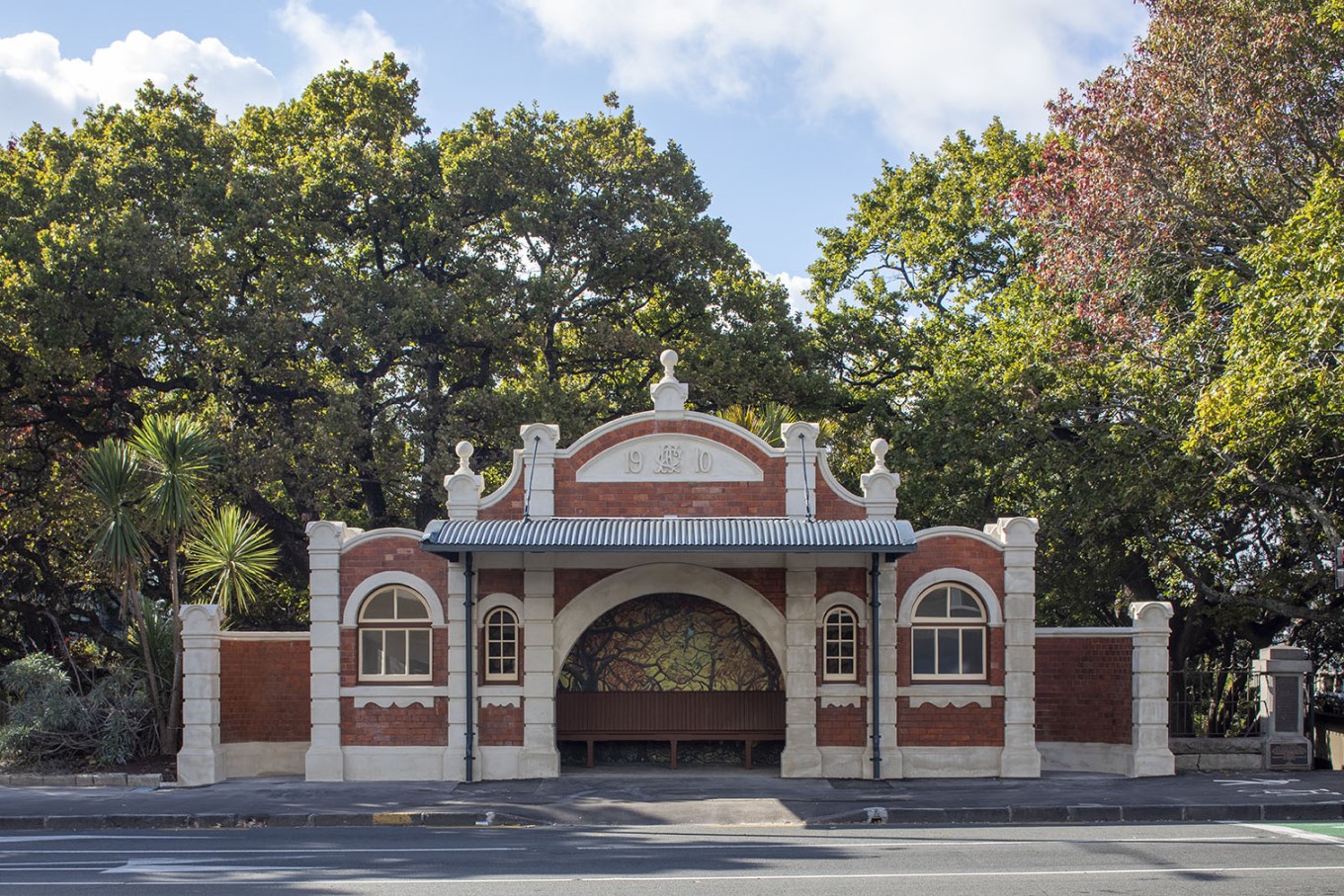Take a moment to picture how inventive Auckland was in the early 1900s.
Public transport was flourishing with a tram and ferry network bursting at the seams with people. In 1902, Queen Street was asphalted. At first, the horses would slip on the new, unfamiliar surface, but people reported having cleaner shoes! Ten years later, the glorious Chief Post Office building opened its doors at the seaward end of Queen Street.
Hemlines were lifting above the ankle for women as the world’s fashion liberation was gathering momentum and the first public conveniences for women were opened in 1910 as part of a state of the art tram station in Symonds Street.
On 17 December 1915, while troops were being evacuated from Gallipoli, the WWI Memorial Beacon in Quay Street was first lit. The monument symbolised a beacon of hope and safe return home for our Kiwi soldiers.
In 1921 the elegant Wintergarden glasshouses opened to fitting fanfare in the Auckland Domain, and in the same decade the first ‘atmospheric’ theatre, the magnificent Civic Theatre, was occupying the creative minds of city architects before opening in 1929.
This is an invitation to the history enthusiasts among us!
Walk with us among these six icons. All are expressions of Auckland’s past, and all have been restored to their former glory by the Auckland Council group - with a little help from contemporary ingenuity and technology.
Let’s celebrate the quirky, the breathtaking, the magnificent and the truly unbelievable.
Grand old dames
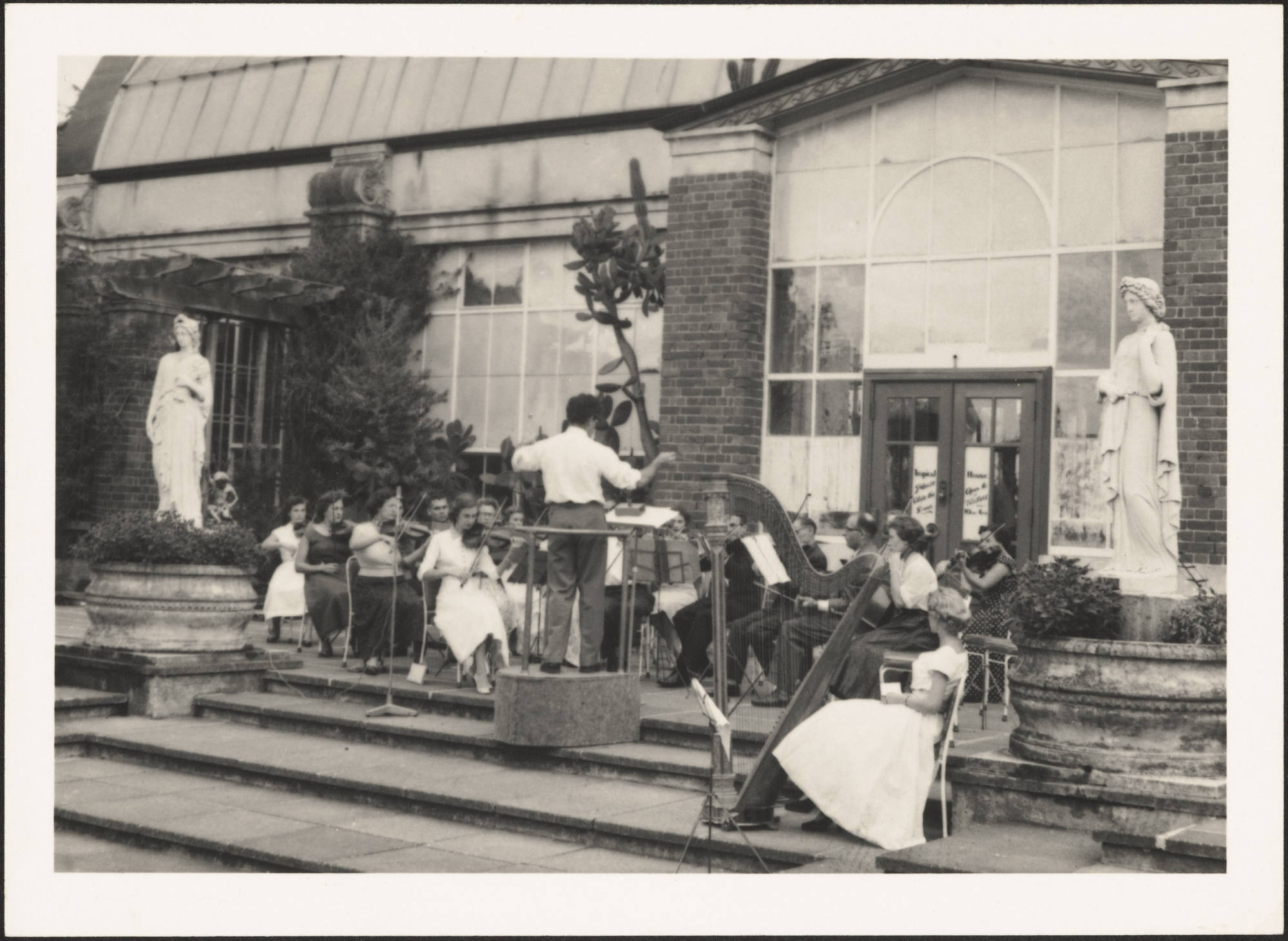
The grand old glasshouses at the Auckland Domain Wintergarden have a new ‘glow’ on.
This year these 100-year-old beauties threw off the covers to begin a new chapter in their lives. Covid-19 lockdowns denied the dames the chance to celebrate their centenary in October 2021 so Auckland Council reintroduced them to the city in 2023.
Designed in the early 1900s by the prominent Auckland architect William Gummer and completed by his expanded practice Gummer and Ford, the two steel and glass, barrel-vaulted Victorian glasshouses have undergone seismic strengthening with additional steel ties and cleats attached to the existing structure, specially designed glazing bars added, and clear glass re-introduced in keeping with the original design intent.
Learn more about the Auckland Domain Wintergardens.
Beacon of hope
The First World War Memorial Beacon, returned to the northern side of Quay Street, is the earliest known built monument to the Great War to be erected in New Zealand.
Initially built in late 1915, it is the only memorial known to have been created while New Zealand forces were still at Gallipoli. On 17 December 1915, while troops were being evacuated from Gallipoli, the Memorial Beacon in Quay Street was first lit.
The memorial beacon also served as a functional light guiding ferries to the city wharves. Sometimes they were navigating through thick fog and dark skies, with lighting more disparate on shore 108 years ago.
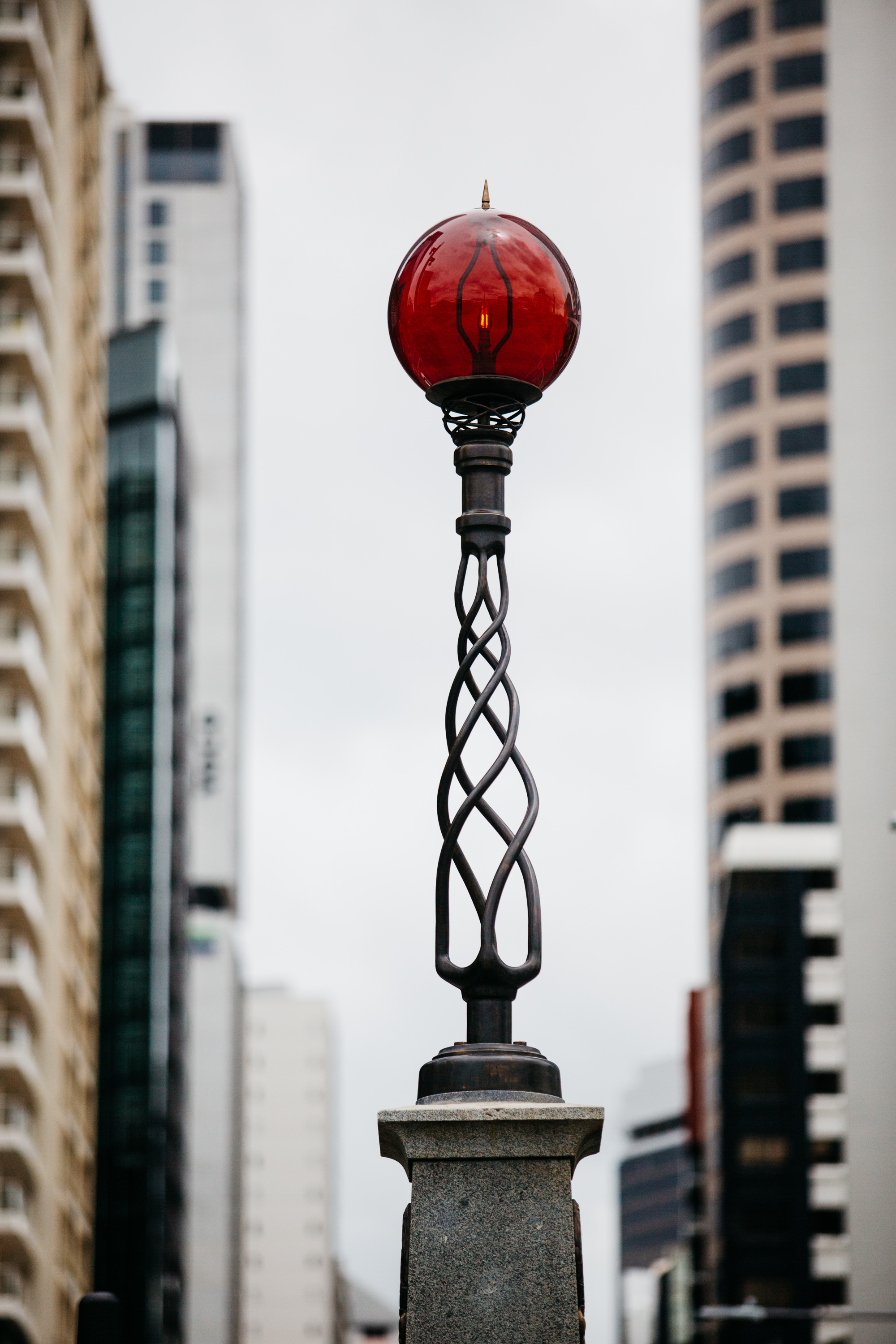
In November 2022 Auckland Council and Auckland Transport oversaw the return of the re-made ironwork spire and glass orb to their position at the top of the Beacon.
Recreating the 500mm-diameter hand-blown red glass orb to scale and form, a team of craftspeople from Taupo deftly manoeuvred two colours of liquid glass, too hot to touch. And the spire was re-made using the craftsmanship of the era, supported by current 3D modelling technology.
Brent Withers from DPA Architects oversaw the intricate bronze turning and casting process for the contractors commissioned by the council group. With steel artisans from Devonport, the team re-created the original spire.
“We are in awe of what they could do a century ago. We’ve used all the technology available to us today. At times we were scratching our heads to achieve the same result,” he says.
Read about Heritage New Zealand Pouhere Taonga making the First World War Memorial a Category 1 historic place.
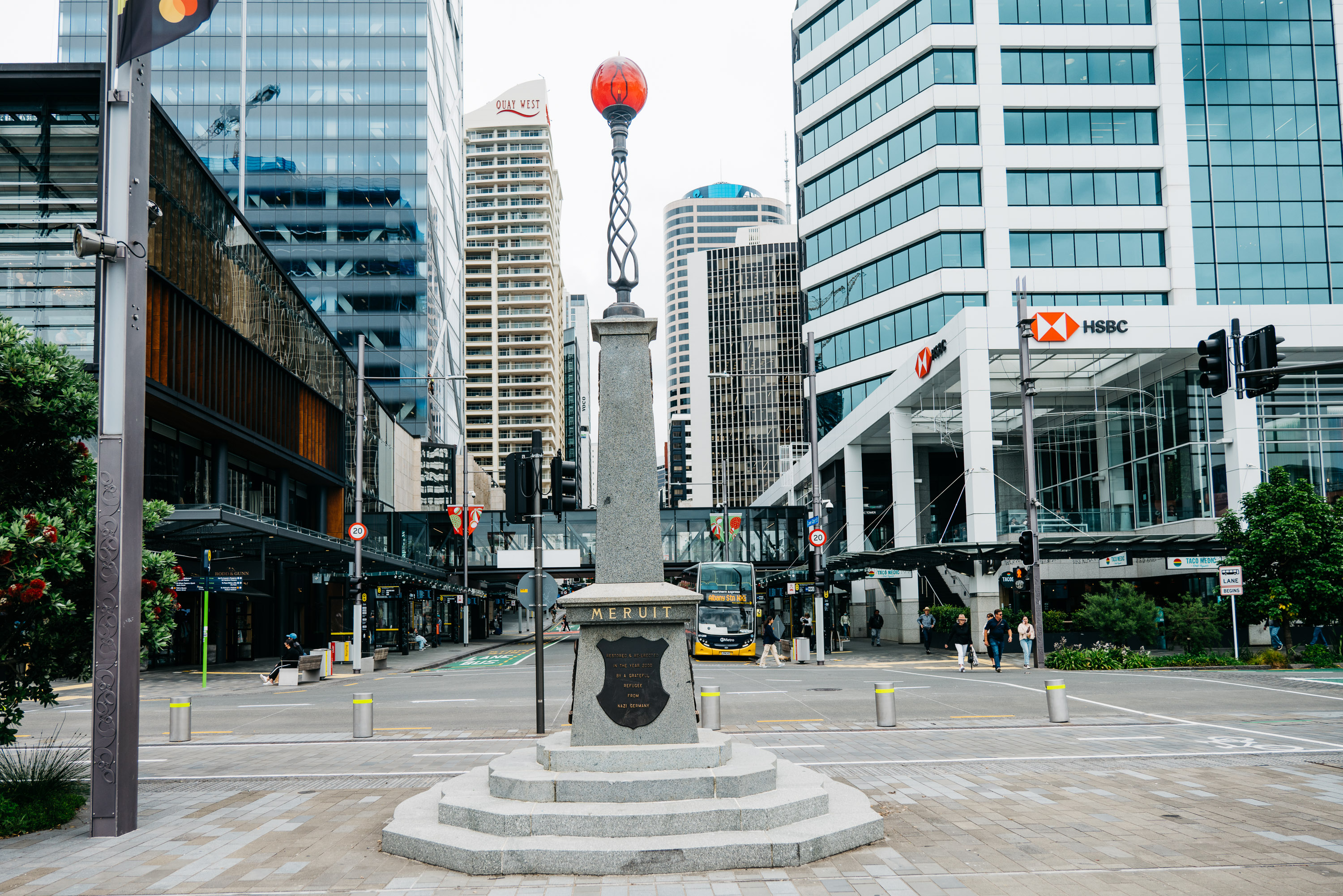
Queen of streets
Now giving Aucklanders a ‘square to square’ experience with the completion in 2023 of the full Waihorotiu path, Queen Street is no stranger to innovation. It became the country’s first asphalt street in 1902. The finished surface was melted smooth with shovel-like implements heated in fiery braziers. The same year, the first electric trams were seen in Queen Street, with Sir John Logan Campbell driving the leading car through the crowds. From ‘The Queen of Streets’, by Jack Leigh.
Fast-forward to 2023 and the plants and planters are among the elements which will tell the story. You’ll see plant species which mirror the wetland heritage of upper Queen Street, broadleaf varieties reflecting the forest / ngāhere which once thrived here, and coastal plants to acknowledge the harbour. The colour palette of the planters also speaks to the area’s history. A gold planter will reflect the cultural history of the Aotea precinct, a scoria colour will reflect the mid-section’s volcanic geology, and Corten steel is a nod to the maritime character of the waterfront end of the street.
So, when you ride along the new Waihorotiu path or walk along the widened footpaths of the newly finished street, don’t forget to notice the narrative of the plants, feel the vibrancy of the new design and take cues from the markings and textural changes which will guide you.
CPO unveiled again
Auckland’s much-loved Chief Post Office (CPO) first graced the northern end of Queen Street more than a century ago. In 2021, after an astonishing feat of engineering and meticulous restoration this Category 1 listed historic building reopened as the new main entrance to the Waitematā Station. The facade was then restored and opened by Auckland Transport in 2022.
Learn more via this Youtube video.
The Civic’s 'magic carpet ride'
Step inside the foyer of the Civic Theatre, and it’s easy to imagine the reaction of Aucklanders in 1929.
‘Inside the Civic, the velvet–blue starred ceiling replicates the Southern Sky. Everything else inside the four walls is as far removed from the Southern Hemisphere as it possibly could be. With its minarets, Hindu gods, monkeys, elephants and red-eyed panthers, the theatre’s wonderful interior is as close to taking a magic carpet ride as a human could wish. At the end of each “talkie” movie an orchestral barge would rise out of the pit, and dancing would begin on the dance floor below. Watching from the circle, my grandmother, a practical woman, would worry about her chances of getting drenched under the open sky.’ From Jack Leigh for New Zealand Geographic, about the much-loved theatre.
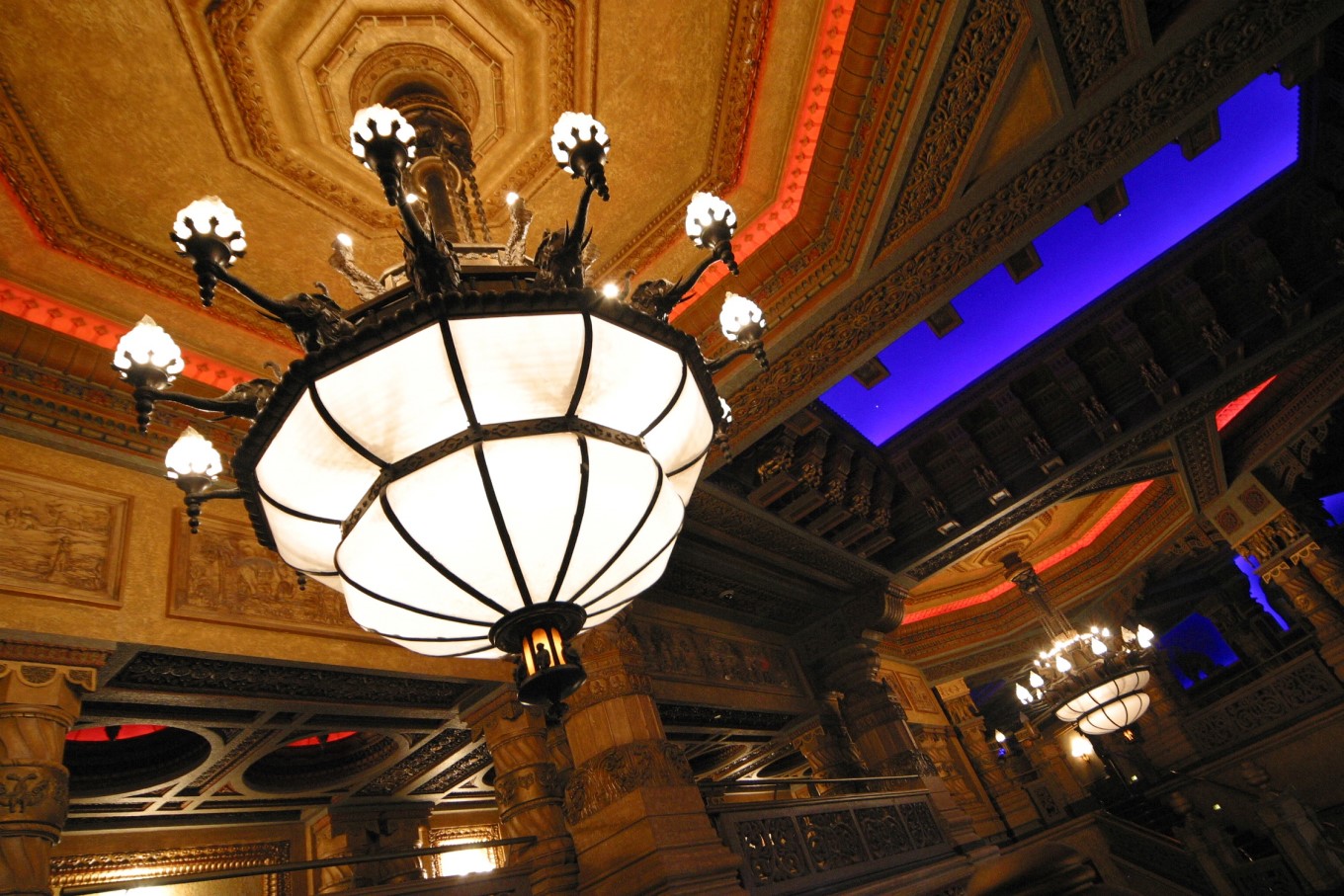
Call of nature
Up until the mid-1800s the options for ‘a call of nature’ in urban areas were limited to a hotel toilet, or else a discrete bush or side street for both men and women. The Symonds Street Public Conveniences and Former Tram Shelter was Auckland’s first public toilet to provide facilities for women opened in 1910. It is one of the only above-ground public toilets and the only dual-purpose tram shelters of its time. Salmond Reed Architects were commissioned to complete the restoration in 2022 including seismic upgrade and restoration of ‘robust finishes and detailing that reflected the historic importance of this architectural gem of a building.’
Learn more on the Symonds St Conveniences and Former Tram Shelter.
